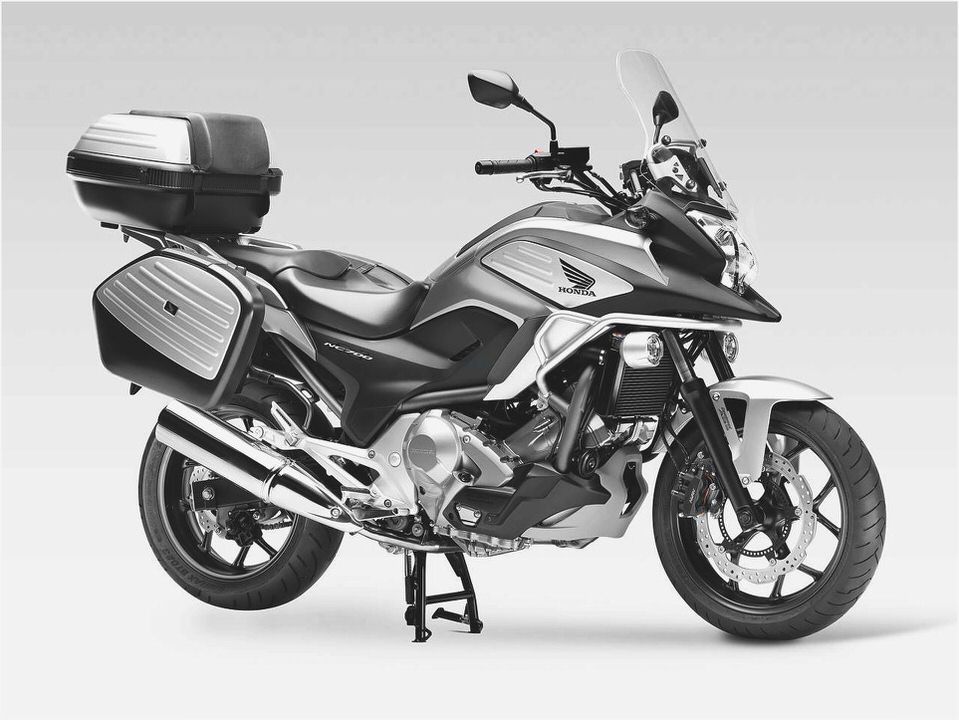
the power and the story…
HONDA – the NC700 bikes in depth…
November and December 2012, London. As usual these days, it’s raining. Incessantly. The wet became default mode for the Bikerglory Honda NC700 tests, carried out at the fag end of what seemed to have been a particularly turbulent year, and not just on the weather front.
But in a way the rain was appropriate for the machines in the frame, since utilitarian riding was clearly on the agenda when the NC concept was first mooted. Which is also why we chose to base both the NC700S and X in London over an extended test period (although we made sure we escaped from the smoke in order to check out the bikes on more open roads – which turned out to be a significant move).
Easier to feel than see: spot the Manual engage switch…
Anyone who takes an interest in bike design will be aware of the potential significance of the NC and familiar with the concept. To start with, that car derived motor: half a Honda Jazz lump – think parallel twin raked forward at 62 degrees. The Jazz derivation means we’re talking peak torque at low revs (4k ono) and a low red line at around 6k revs, assisted by the SOHC under-square design – which makes for an unusual bike configuration in recent, rev hungry times.
Performance resembles that of a turbo diesel four wheeler, accentuated by a torque spike as low as 2k revs. Car engine also means car tech: variable valve timing and lean burn management contribute to low fuel consumption – mixed conditions riding should see 60 mpg realised without undue fuss: our urban orientated testing never returned less than 50 mpg.
Throw in excellent storage facilities – the ‘tank’ lifts away to reveal an area large enough to comfortably contain a decent size lid and gloves, the fuel tank itself being located beneath the pillion seat – and you see why utilitarian is the key descriptive signifier. The design is modular in the sense that frame and motor accommodate the ‘adventure’ 700X, roadster 700S and the Integra scoot. And it is in fact the latter which provides the key to the NC’s functionality first ethos, because the 700 models come with Honda’s DCT clutch-less auto transmission as an option (and ABS as standard on UK machines), making the 700s the cheapest new motorcycle to feature full auto (with manual control options, see below) at £6300 OTR – with the prospect of finding new 2012 stock in 2013 for even less.
How is this possible, given that we’re not just talking about a new model – but a new design concept? Modularity and shared components (like the Jazz derived lump) keep development and production costs down, but there is an element of loss leader about the project: Honda need to break DCT on the motorcycle market, since they clearly see the technology as the way forward, tempting scooter owners up the ladder en route to high end products like the Crosstourer. The NC may be well down Honda’s retail price list, but is right up there when it comes to significance.
Saving on components helps keep unit costs down: neither bike is particularly light (215 kerb for the S c/w DCT) and the suspension damping – always a give away – feels a bit unrefined, if serviceable. The budget approach inevitably means that some components fall below the highest historical Honda standards.
Let’s get the niggles out of the way: both bikes had lock and barrel problems – probably not helped by the unrelenting rain – and on one occasion only the assistance of a sympathetic, Fireblade owning chef saved the bike from being stuck in Portobello Road. Responding to my unusual take away order, he popped out from the kitchen with an egg cup of Extra Virgin – WD40 not being on the menu. Job eventually done – but it would have been all too easy to bend the key out of true.
The storage lock was no better. From that point on I added lock lube to the toolkit, and had subsequent reason to use it. There were a couple of other irritants. Fuelling is jumpy off a closed throttle, although this could be down to DCT engaging (see below).
A decent, easily decoded rev counter really matters on this bike courtesy of that low redline, but the figures above the NC’s segmented bar display are simply too small. Petrol splashes out far too easily on refill (see image below) – the price to be paid for having the 14 litre tank squashed in under the pillion seat, making way for the generous storage space up front. Variables make it almost impossible to quantify these things, but if your NC has done more than 130 miles since the previous fill up, you should be looking for a garage.
However, no individual piece of kit or component design is so poor that it compromises the whole project. The only thing obviously missing is shaft drive, which fits the utility profile hand in glove. But the presence of chain and sprockets means altering the gearing is straightforward, a procedure which may have a particular relevance to the NC (see transmission, below).
Much has been made of the low centre of gravity, a phrase more naive journalists bandy about as though it were of itself some kind of handling panacea: anyone new to biking who gets their information from the press might be surprised to learn that it is far from axiomatic that a lower C of G is inherently preferable to a higher one. The truth is that wherever you bias weight – forward, back, high, low – there is always a down side (a mantra all too familiar to vehicle designers). Which pans out like this:
FORWARD C of G vulnerability: over steer, rear wheel lateral instability.
REAR C of G vulnerability: under steer, front wheel lateral instability.
HIGH C of G vulnerability: front end light under power, rear lift on braking – less planted at speed
LOW C of G vulnerability: rear wheel slip under power, front wheel slip on braking – less agile at low speed
And wherever the C of G ends up, it will be less of a boon when you’re lugging around the best part of 220 kilos on average suspension atop a longish wheelbase, with minimal engine braking, no manual clutch and a bunch of digits where a responsive throttle cable should be. Issues which come to the fore on both NCs far more at low speed, exactly as you would expect when the weight is carried low down.
Conversely, once things get moving and the road opens up with faster bends coming to the fore, they start making much more sense. In particular, the lower S comes alive: its dynamics kind of resemble early Ducati Monsters, which also far prefer faster, sweeping bends to the constraints of a city centre. The lower bar height on the S compliments its C of G, the ride feeling more plugged into the road as speed climbs.
The small screen does a reasonable job of keeping blast at a bay at higher speeds, and the firmer front end does not make for excessive harshness on ill maintained road surfaces. But the low set up, which works for the S at at speed, compromises urban agility and looses any sense of commanding ergonomics.
Big distance between bars and C of G creates issues…
Production road bikes are always compromised – an inevitable consequence of being set up to cope with a huge variety of ride conditions. The X is more at home in town, with its greater suspension travel and loftier, wider bars affording decent leverage, which helps as you charm the bike through and around a multi lane, moving obstacle course (like the one which coagulates outside the Hackney Empire pretty much 24/7 these days).
However, high bars can be a two way street, depending on how forces are disposed underneath them. In or out of town, there isn’t much sense of connection with the X contact patch, like you’re never really sure just how much grip is available. You want to fling the bike around, but you aren’t getting the feedback to help you.
The low slung bulk wont help either NC in the gymkhana ring, but the X copes better than the S in the smoke – and the extra ride height helps the rider do the same.
Honda class the X as an adventure bike, which is both laughable (road tyres, weight problem, low C of G, suspension set up) and a marketing contradiction, since adventure bikes require a higher C of G to start with. The current trend for manufacturers and importers to flog anything high barred (excluding cruisers) as adventure bikes needs to be challenged rather than merely accepted.
The NC’s worthy Transalp stable mate is the acceptable face of adventure bike branding: although far from an ideal off road conveyance, it would murder the 700X away from the blacktop. Then again, the bank account would take a concomitantly bigger hit.
A scenario best avoided: the X away from tarmac…
For the record, on road the rear tyre did slip on a several occasions under power on both bikes, but it is impossible to say whether that was down to the low C of G or surface conditions. Probably the latter, slightly aided by the former.
ENGINE PERFORMANCE
Looking back at early reviews of the NC range it is clear that quite a few correspondents simply didn’t get it. As long as you are prepared to max out speed wise at around 100mph, NC performance is perfectly acceptable – although of course the mpg return will suffer accordingly as you push on. The fact that the vast majority of UK bike miles are normally ridden at speeds well below three figures should be factored in before dismissing the NC out of hand.
Reviewers also found it hard to get their heads around a bike where max torque kicks in early doors, ironically something many riders had been asking for – grunt was a quality sacrificed on many over-square designs in the search for revs. The problem with the NC is that it is too much of a leap in the opposite direction: simply re-profiling that single cam would have plumped the shunt a little more squarely in the mid range, thus providing early shove without sacrificing quite so much nearer the top.
Ironically fuel consumption might also have been thus improved, since a torque spike as low as 2k revs does not help conserve fuel. When summer – remember summer? – eventually staggers back on stage, we reckon that the low redline will be frustrating even conservative NC owners. We’re not asking for a major re-appraisal of performance here, we’re simply suggesting shifting the power and torque curves over to the right by 1500 rpm or so, no more.
This would make the bike feel a lot more flexible without emasculating the lower half of the rev range.
Engine braking was not a force to be reckoned with, perhaps surprisingly so on an under-square twin. Some riders prefer it that way, but when you don’t have a clutch either you are sacrificing finer degrees of control, and this really matters on a relatively heavy motorcycle.
The combination of bulk with minimal engine braking and no fine control from the clutch can catch out even experienced riders, and slow speed control – where fine clutch control is foregrounded – is undoubtedly compromised on the DCT bikes. Rather than undermine motorcycles by loading them with scooter friendly control systems, the world might be a safer place if graduating scooter riders learned how to ride a conventional motorcycle properly in the first place, while motorcycle DCT was further developed. But that wouldn’t open up a new market….
Nevertheless, the NC’s combination of immediate grunt, ABS and Sports mode DCT shifting makes it a proper (if slightly surprising) traffic lights GP weapon in the right hands, and some of those early reviewers would be amazed to see how an experienced courier can get the 700 on the charge in the city, supplying the cornering input the bike needs around town. The footage would make a perfect viral foil to counter the facade of civilised commuting that Honda have always used to promote their utility bikes. KTM might still consider such a strategy: Honda would run a mile…
Once well clear of the smoke, the NC will surprise you – just as long as you ride for torque utilisation rather than power, and keep an eye on the revs and speedo. On open roads the geometry and dynamics make much more sense – an environment where, of the two bikes, the S sells itself more willingly. The same handling characteristics that impede elsewhere start working for the rider, although tight twisty B roads ask further questions of the chassis and set up.
Larger A roads are revealed the NC’s natural habitat, and if your commute involves mainly that kind of riding, then the bike makes sense as a sophisticated but keenly priced workhorse with frugal consumption.
If you buy into the prospect of automatic transmission for motorcycles (c/w switchable manual over ride), possibly because you do a lot of urban miles, then you need to be looking at an NC. You wont find a better system for the money on any other motorcycle – indeed, it wouldn’t be unreasonable to suggest that currently you wont find a better system on any bike, irrespective of cost. But therein lies the nub of the DCT debate as things stand right now.

You wont find better because there are precious few proper motorcycles out there with any type of auto transmission, since – scooters apart – the application is still a relatively new one as far as bikes go. And that means you have to ask yourself to what extent you are effectively a test pilot. The fact that the principles of this technology have been around for some time is irrelevant, because cars and scooters do not behave like fully fledged 700cc motorcycles.
Here’s how it works. The bike reverts to neutral once switched off, so when re-started neutral is the default position. A three way rocker switch under the right thumb allows the selection of N, Drive, or Sport modes. Select either of the latter and away you go. In Drive, the bike changes up far earlier than you’ll be expecting unless you really open up.
In Sport, revs are held for longer all round so the up change is delayed. In either mode, riders can actuate their own up and down changes via switches on the left handle bar, or simply let the bike deal with it. In other words, Drive and Sport can work in full or semi auto modes. Additionally, a right hand bar switch allows the rider to fully control all changes in Manual mode.
This means the bike will only auto change if the rider fails to select a low enough gear coming to a halt. That’s it. In practice, selecting Sport mode and using manual changes as and when seemed best compromise, providing the most satisfying ride, preferable to full manual because the option of letting auto do the donkey work when things snarl up.
It was tempting in town to simply stick the bike in Drive and let it get on with automatic selection, but in practice this was frustrating. The bike inevitably shuttled through changes while cornering, and the mode’s propensity to get through at least three shifts where a conventional 600 or 750 would suggest one, became annoying – especially since it seemed without purpose: utilising available torque at low revs on a heavier bike is a thirsty business in its own right.
I found myself longing to hold a gear at will, especially in Drive (in practice this can only be achieved by switching to full Manual control, continuous use of which kind of defeats the point of an auto facility in the first place). Many reviewers have complained of this, and with some justification; in Drive mode the DCT will only hang on to a gear when shown the whip.
In other words, shift point is not simply dictated by revs – throttle position sensor data plays a part in dictating change points. To some extent the ECU can ‘learn’ how individuals tend to ride and factor that information into the equation. (Clutch bite point can also be reset to optimum periodically by flicking through the menu and ticking the appropriate box: it all a million miles from cables, grease and a toolkit.) Drive should be cruising mode, but try jolding back it and the NC feels under geared, looking for another up-change before you’ve even realised – although in reality the problem is more to do with ECU management than gearing per se. Nevertheless, we’d be interested in riding an NC with taller gearing all round, so if anyone out there whips out the old gear commander at sprocket change time with an eye on a move up from standard, do let us know. Eschewing shaft drive has its compensations…
By far the biggest problem of DCT as applied to the NC700, in whatever guise, is that no manually actuated clutch means no fine control: no feathering, no feeding, no trailing. You don’t miss these things on a scooter, because few scooters have the capability of the NC – I can’t remember anything out accelerating either 700 during the three weeks I had with the bikes: stick it in manual or sport and up to about 60 mph you are at least as fast as a sports 600.
Yes, the low redline gets in the way soon enough afterwards – especially in Manual mode until the pilot gets the hang of things – but that doesn’t alter the fact that you can ride the NC for shove. But a large lump of metal and plastic on the move needs all the control finesse it can get, decent ABS notwithstanding. With the evolution of clutches in general c/w slippers and shifters, the prospective punter needs to be think hard about the relevance of auto on a fully fledged motorcycle – preferably before purchase…
So what about the non DCT version? Take the automation away, and does the bike have enough going for it as a multi purpose utility machine to see off Honda’s own new CB500, for example? £4650 has been quoted in the press for the latter, which surely spells competition for the NC – and in particular the manual version. The CB makes for an interesting comparison because power output (47 bhp) is exactly the same as the NC’s, to cater for the new EEC wide test regulations.
Power and weight are regulated, but whereas the CB is right on the 175 kilo limit for minimum (dry) weight, the NC carries excess baggage. Thus the CB is cheaper and lighter, while making identical max power….
Takes more than vestigial beak and extra lamps to make an Adventure…
It always feels tough being critical of machines which consciously offer a new take on how biking might be, especially when a lot of boxes are ticked en route. Bikerglory has traditionally welcomed innovation: our support for road going TC and ABS raised a few hackles, but if we were buying new it would take something massively special for us to ignore options that increase pleasure while reducing the risk of pain. When it comes to the NC700, however, it’s hard to say that either version was especially satisfying, while reservations about the lack of fine control in this context – an inevitable consequence of DCT – remain.
Right at the end of our NC time, the skies cleared for a whole day. Being January 1st, the roads were clear too, and I decided to stick the S in Manual and leave it there for the duration – a bit like riding a more conventional machine with a quickshifter, tiptronic style.
I soon found optimum change points, and by using a touch of rear brake in lieu of engine braking – not enough for the C-ABS to noticeably activate the front – for the first time the bike started making some sort of holistic sense. It was the most fun I had on an NC, but in order to achieve it I was in effect mimicking a more conventional machine….
It is possible to enjoy the NC as previously described, but unlike many Hondas, performance wise the 700 is something of a one trick pony, and even that is not without a downside: what you gain downstairs doesn’t last to the top floor. If the machine succeeds in the market place, it’s possible to envisage some tweaking power band wise for an updated model.
Despite the 270 degree crank angle for V2 feel, we don’t get the soundtrack – like so many modern bikes the NC is too quiet, courtesy of the many restrictive hoops through which today’s large volume production machines must pass before final assembly. This is not merely a subjective opinion: anyone who has regularly ridden any two wheeler, powered or otherwise, in a major capital city will testify as to the dangers of not being heard.
One young man made a decent fist of chucking himself underneath the 700X at night in Kingsland Road: he simply failed to notice us, a scenario that should be unthinkable on any healthy 700cc twin. It was a close one. Despite the legislation, it doesn’t have to be that way. The Italians remain the masters when it comes to getting new bikes into the showroom which actually sound the way a proper bike should, rather than being a strangled facsimile.
An enterprising owner may seek to remedy this in the usual manner, although (s)he may struggle to find a wide variety of after market options. We would unhesitatingly make some noise, and reckon that the motor would play a pretty decent tune.
That – and possibly upping the gearing – apart, there is not much you can do about the other issues identified here. Key dynamic design decisions mean Honda have come up with a bike that feels most at home on decent size, open roads, whereas the motor has been set up to be a contender in less flowing conditions. They haven’t quite got it right, producing a machine with something of an identity crisis about it, which might explain the divided reaction it inevitably provokes.
It is not yet the broad spectrum, all purpose scooter replacer that Honda had hoped for. Which is not to say the manufacturer wont nail it in newer incarnations – but for that to happen, the NC 700 range must sell well in the first eighteen months of shelf life. Disquieting memories of the DN-01 hybrid (with which the NCs share DNA) abide, and the NC’s first objective is to comprehensively outperform its progenitor in the showroom.
This it will undoubtedly achieve – the DN was massively over priced – and if in doing so proves popular enough, we will see model evolution. The dynamics (physical spec) and control issues may alienate customers from a motorcycle background, but there will be people for whom this NC fits the bill. The key question is whether or not there are enough of them to ensure the bike has a future.
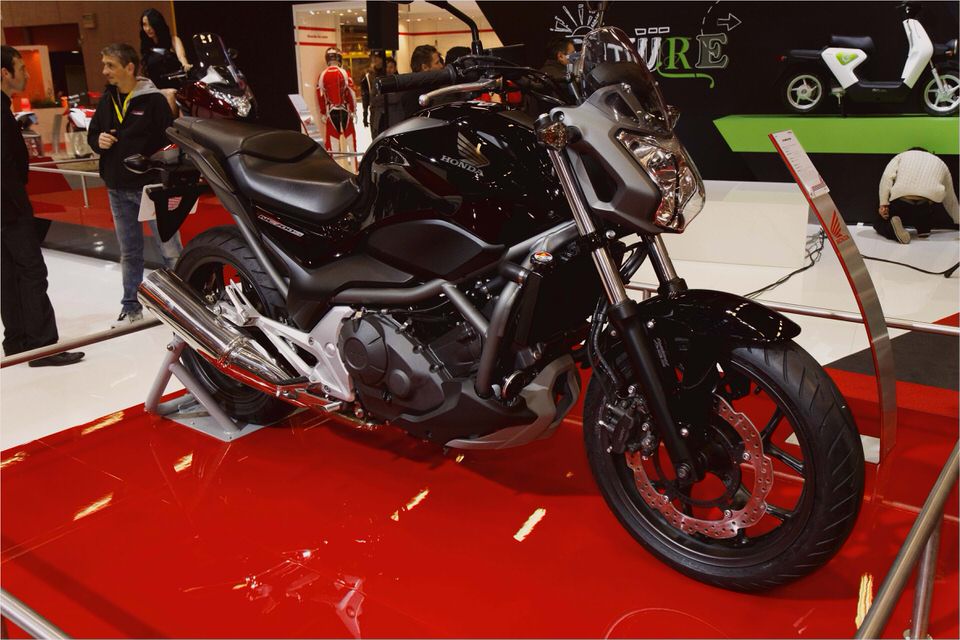

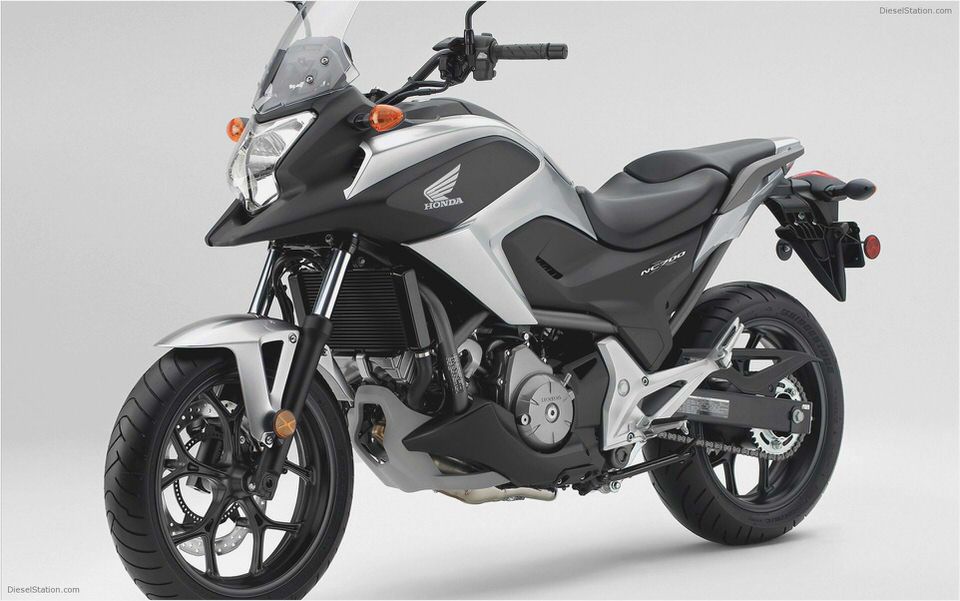
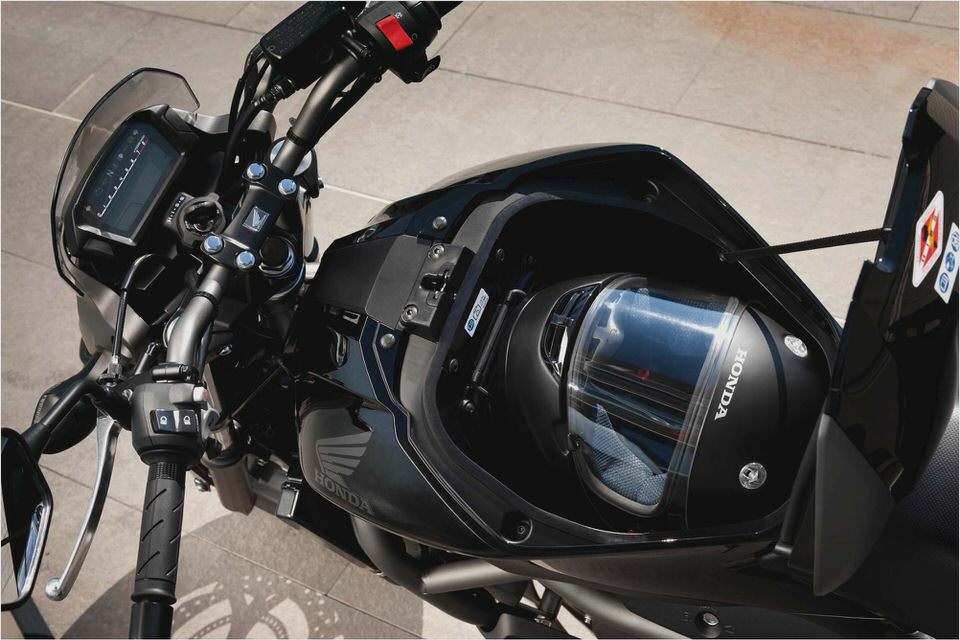
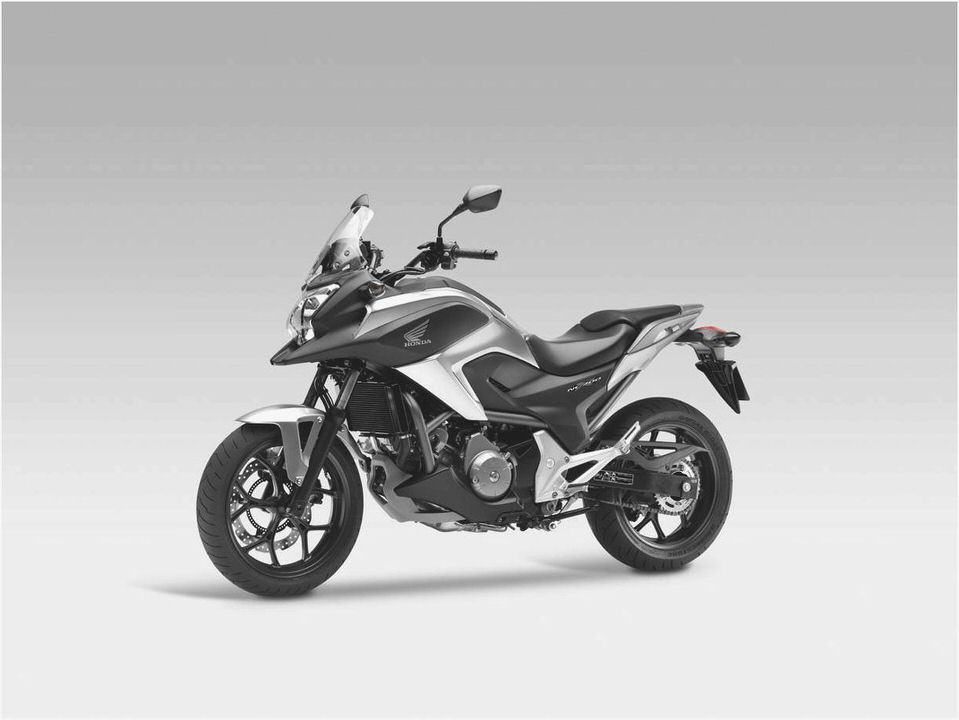
- Singer Prototype 911 : 2010 Cartype
- Honda PC800 Pacific Coast: 1989-90, 1994-98 Rider Magazine
- Solo Seat for a Honda VTX 1300C from C&C Motorcycle Seats
- 2011 Honda CR-Z – Honda Tuning Magazine
- Honda CBF 500 review
